Transport of Non-Spherical Particles in Square Microchannel Flows: A Review
Abstract
:1. Introduction
2. Rotational Behavior of a Non-Spherical Particle in a Shear Flow
2.1. Ellipsoidal Particle
2.1.1. Jeffery’s Theory
2.1.2. Extension of Jeffery’s Theory for General Shear Flows
2.1.3. Effect of Fluid Inertia
2.1.4. Extension of Jeffery’s Theory for Bounded Flows
2.1.5. Effect of Buoyancy (Sometimes Called “Particle Inertia”)
2.1.6. Effect of the Particle’s Aspect Ratio
2.1.7. Effect of the Particle’s Initial Orientation
2.2. Axisymmetric Non-Ellipsoidal Particle
2.2.1. Extension of Jeffery’s Theory to Axisymmetric Non-Ellipsoidal Particles
2.2.2. Effect of Fluid Inertia
2.2.3. Walls and Confinement Effects
2.2.4. Effect of the Particle’s Aspect Ratio
2.2.5. Effect of the Solid Volume Fraction (Suspension’s Concentration)
2.3. Asymmetric Particles
3. Rotational and Migratory Behaviors of a Particle Flowing in a Square Microchannel
3.1. Spherical Particles
3.2. Non-Spherical Particles
3.2.1. Rotation Behavior and Lateral Migration at Moderate Reynolds Numbers
3.2.2. Influence of the Reynolds Number Re
- For Re < 150, particles log-roll and migrate toward the four face-centered equilibrium positions, with the particles being closer to the wall with increasing Re;
- For 150 < Re < 200, an oblate particle still focuses close to a face-centered equilibrium position but with its axis not perpendicular to the closest wall. This rotational mode resembles the inclined rolling mode reported in the dynamical system analysis of the motion of an oblate spheroid in a simple shear flow [36,39]. In that range of Re, particles still get closer to the wall when Re increases;
- For Re > 200, an oblate particle approaches one of the four standard equilibrium positions, but its orientation and rotation are time-dependent and chaotic. The rotational mode seems to be a combination of the tumbling and the log-rolling motions. This behavior of oblates was also observed by Rosén et al. [39], who showed that above a certain particle Reynolds number, the tumbling motion can be found in addition to the already existing log-rolling mode. At Re > 300, the particle focuses closer to the channel center.
3.2.3. Influence of the Confinement Ratio κ
3.2.4. Influence of the Particle’s Aspect Ratio λ
3.2.5. Effect of Other Parameters
3.2.6. Applications
4. Conclusions
- The particles’ behavior (rotational and translational) at high Reynolds numbers (over 200), which is still a subject of discussion in the literature;
- The role of the interaction between non-spherical particles on their lateral migration and longitudinal ordering, which has not been studied yet to the best of our knowledge, although it has been proven to be essential in the case of spherical particles;
- The coupling between the lateral migration and the rotation of the particle during the transitional phase, which is not yet completely understood.
Funding
Conflicts of Interest
References
- Gossett, D.R.; Weaver, W.M.; Mach, A.J.; Hur, S.C.; Tse, H.T.K.; Lee, W.; Amini, H.; Di Carlo, D. Label-Free Cell Separation and Sorting in Microfluidic Systems. Anal. Bioanal. Chem. 2010, 397, 3249–3267. [Google Scholar] [CrossRef] [Green Version]
- Takagi, J.; Yamada, M.; Yasuda, M.; Seki, M. Continuous Particle Separation in a Microchannel Having Asymmetrically Arranged Multiple Branches. Lab Chip 2005, 5, 778. [Google Scholar] [CrossRef] [PubMed]
- Zhu, J.; Tzeng, T.-R.J.; Xuan, X. Continuous Dielectrophoretic Separation of Particles in a Spiral Microchannel. Electrophoresis 2010, 31, 1382–1388. [Google Scholar] [CrossRef] [PubMed]
- Inglis, D.W.; Riehn, R.; Austin, R.H.; Sturm, J.C. Continuous Microfluidic Immunomagnetic Cell Separation. Appl. Phys. Lett. 2004, 85, 5093–5095. [Google Scholar] [CrossRef] [Green Version]
- MacDonald, M.P.; Spalding, G.C.; Dholakia, K. Microfluidic Sorting in an Optical Lattice. Nature 2003, 426, 421–424. [Google Scholar] [CrossRef] [PubMed]
- Laurell, T.; Petersson, F.; Nilsson, A. Chip Integrated Strategies for Acoustic Separation and Manipulation of Cells and Particles. Chem. Soc. Rev. 2007, 36, 492–506. [Google Scholar] [CrossRef] [PubMed]
- Poiseuille, J. Observations of Blood Flow. Ann. Sci. Nat. STrie 1836, 5, 111–115. [Google Scholar]
- Segré, G.; Silberberg, A. Behaviour of Macroscopic Rigid Spheres in Poiseuille Flow Part 1. Determination of Local Concentration by Statistical Analysis of Particle Passages through Crossed Light Beams. J. Fluid Mech. 1962, 14, 115–135. [Google Scholar] [CrossRef]
- Segré, G.; Silberberg, A. Behaviour of Macroscopic Rigid Spheres in Poiseuille Flow Part 2. Experimental Results and Interpretation. J. Fluid Mech. 1962, 14, 136–157. [Google Scholar] [CrossRef]
- Di Carlo, D. Inertial Microfluidics. Lab Chip 2009, 9, 3038. [Google Scholar] [CrossRef]
- Amini, H.; Lee, W.; Di Carlo, D. Inertial Microfluidic Physics. Lab Chip 2014, 14, 2739. [Google Scholar] [CrossRef] [PubMed]
- Matas, Jp.; Morris, Jf.; Guazzelli, E. Lateral Forces on a Sphere. Oil Gas Sci. Technol. 2004, 59, 59–70. [Google Scholar] [CrossRef]
- Di Carlo, D.; Irimia, D.; Tompkins, R.G.; Toner, M. Continuous Inertial Focusing, Ordering, and Separation of Particles in Microchannels. Proc. Natl. Acad. Sci. USA 2007, 104, 18892–18897. [Google Scholar] [CrossRef] [PubMed] [Green Version]
- Bhagat, A.A.S.; Kuntaegowdanahalli, S.S.; Papautsky, I. Inertial Microfluidics for Continuous Particle Filtration and Extraction. Microfluid. Nanofluidics 2009, 7, 217–226. [Google Scholar] [CrossRef]
- Broday, D.; Fichman, M.; Shapiro, M.; Gutfinger, C. Motion of Spheroidal Particles in Vertical Shear Flows. Phys. Fluids 1998, 10, 86–100. [Google Scholar] [CrossRef]
- Lashgari, I.; Ardekani, M.N.; Banerjee, I.; Russom, A.; Brandt, L. Inertial Migration of Spherical and Oblate Particles in Straight Ducts. J. Fluid Mech. 2017, 819, 540–561. [Google Scholar] [CrossRef] [Green Version]
- Nizkaya, T.V.; Gekova, A.S.; Harting, J.; Asmolov, E.S.; Vinogradova, O.I. Inertial Migration of Oblate Spheroids in a Plane Channel. Phys. Fluids 2020, 32, 112017. [Google Scholar] [CrossRef]
- Hur, S.C.; Henderson-MacLennan, N.K.; McCabe, E.R.B.; Di Carlo, D. Deformability-Based Cell Classification and Enrichment Using Inertial Microfluidics. Lab Chip 2011, 11, 912. [Google Scholar] [CrossRef]
- Jeffery, G.B. The Motion of Ellipsoidal Particles Immersed in a Viscous Fluid. Proc. R. Soc. Lond. A. 1922, 102, 161–179. [Google Scholar] [CrossRef] [Green Version]
- Bretherton, F.P. The Motion of Rigid Particles in a Shear Flow at Low Reynolds Number. J. Fluid Mech. 1962, 14, 284–304. [Google Scholar] [CrossRef]
- Leal, L.G. Particle Motions in a Viscous Fluid. Annu. Rev. Fluid Mech. 1980, 12, 435–476. [Google Scholar] [CrossRef]
- Chwang, A.T. Hydromechanics of Low-Reynolds-Number Flow. Part 3. Motion of a Spheroidal Particle in Quadratic Flows. J. Fluid Mech. 1975, 72, 17–34. [Google Scholar] [CrossRef]
- Subramanian, G.; Koch, D.L. Inertial Effects on Fibre Motion in Simple Shear Flow. J. Fluid Mech. 2005, 535, 383–414. [Google Scholar] [CrossRef]
- Candelier, F.; Einarsson, J.; Lundell, F.; Mehlig, B.; Angilella, J.-R. Role of Inertia for the Rotation of a Nearly Spherical Particle in a General Linear Flow. Phys. Rev. E 2015, 91, 053023. [Google Scholar] [CrossRef] [PubMed] [Green Version]
- Gierszewski, P.J.; Chaffey, C.E. Rotation of an Isolated Triaxial Ellipsoid Suspended in Slow Viscous Flow. Can. J. Phys. 1978, 56, 6–11. [Google Scholar] [CrossRef]
- Hinch, E.J.; Leal, L.G. Rotation of Small Non-Axisymmetric Particles in a Simple Shear Flow. J. Fluid Mech. 1979, 92, 591–607. [Google Scholar] [CrossRef] [Green Version]
- Saffman, P.G. On the Motion of Small Spheroidal Particles in a Viscous Liquid. J. Fluid Mech. 1956, 1, 540–553. [Google Scholar] [CrossRef] [Green Version]
- Harper, E.Y.; Chang, I.-D. Maximum Dissipation Resulting from Lift in a Slow Viscous Shear Flow. J. Fluid Mech. 1968, 33, 209. [Google Scholar] [CrossRef]
- Karnis, A.; Goldsmith, H.L.; Mason, S.G. The Flow of Suspensions through Tubes: V. Inertial Effects. Can. J. Chem. Eng. 1966, 44, 181–193. [Google Scholar] [CrossRef]
- Mason, S.G.; Manley, R.S.J. Particle Motions in Sheared Suspensions: Orientations and Interactions of Rigid Rods. Proc. R. Soc. Lond. A. 1956, 238, 117–131. [Google Scholar] [CrossRef]
- Trevelyan, B.J.; Mason, S.G. Particle Motions in Sheared Suspensions. I. Rotations. J. Colloid Sci. 1951, 6, 354–367. [Google Scholar] [CrossRef]
- Qi, D.; Luo, L. Transitions in Rotations of a Nonspherical Particle in a Three-Dimensional Moderate Reynolds Number Couette Flow. Phys. Fluids 2002, 14, 4440–4443. [Google Scholar] [CrossRef] [Green Version]
- Qi, D.; Luo, L.-S. Rotational and Orientational Behaviour of Three-Dimensional Spheroidal Particles in Couette Flows. J. Fluid Mech. 2003, 477. [Google Scholar] [CrossRef] [Green Version]
- Kittipoomwong, P.; See, H.; Mai-Duy, N. Dynamic Simulation of Non-Spherical Particulate Suspensions. Rheol. Acta 2010, 49, 597–606. [Google Scholar] [CrossRef] [Green Version]
- Joung, C.G. Dynamic Simulation of Arbitrarily Shaped Particles in Shear Flow. Rheol. Acta 2006, 46, 143–152. [Google Scholar] [CrossRef]
- Ding, E.-J.; Aidun, C.K. The Dynamics and Scaling Law for Particles Suspended in Shear Flow with Inertia. J. Fluid Mech. 2000, 423, 317–344. [Google Scholar] [CrossRef]
- Yu, Z.; Phan-Thien, N.; Tanner, R.I. Rotation of a Spheroid in a Couette Flow at Moderate Reynolds Numbers. Phys. Rev. E 2007, 76, 026310. [Google Scholar] [CrossRef]
- Huang, H.; Yang, X.; Krafczyk, M.; Lu, X.-Y. Rotation of Spheroidal Particles in Couette Flows. J. Fluid Mech. 2012, 692, 369–394. [Google Scholar] [CrossRef]
- Rosén, T.; Do-Quang, M.; Aidun, C.K.; Lundell, F. Effect of Fluid and Particle Inertia on the Rotation of an Oblate Spheroidal Particle Suspended in Linear Shear Flow. Phys. Rev. E 2015, 91, 053017. [Google Scholar] [CrossRef]
- Lundell, F.; Carlsson, A. Heavy Ellipsoids in Creeping Shear Flow: Transitions of the Particle Rotation Rate and Orbit Shape. Phys. Rev. E 2010, 81, 016323. [Google Scholar] [CrossRef] [PubMed]
- Rosén, T.; Do-Quang, M.; Aidun, C.K.; Lundell, F. The Dynamical States of a Prolate Spheroidal Particle Suspended in Shear Flow as a Consequence of Particle and Fluid Inertia. J. Fluid Mech. 2015, 771, 115–158. [Google Scholar] [CrossRef]
- Ku, X.K.; Lin, J.Z. Inertial Effects on the Rotational Motion of a Fibre in Simple Shear Flow between Two Bounding Walls. Phys. Scr. 2009, 80, 025801. [Google Scholar] [CrossRef]
- Aidun, C.K.; Lu, Y.; Ding, E.-J. Direct Analysis of Particulate Suspensions with Inertia Using the Discrete Boltzmann Equation. J. Fluid Mech. 1998, 373, 287–311. [Google Scholar] [CrossRef]
- Skjetne, P.; Ross, R.F.; Klingenberg, D.J. Simulation of Single Fiber Dynamics. J. Chem. Phys. 1997, 107, 2108–2121. [Google Scholar] [CrossRef]
- Su, J.; Chen, X.; Hu, G. Inertial Migrations of Cylindrical Particles in Rectangular Microchannels: Variations of Equilibrium Positions and Equivalent Diameters. Phys. Fluids 2018, 30, 032007. [Google Scholar] [CrossRef] [Green Version]
- Pan, T.-W.; Chang, C.-C.; Glowinski, R. On the Motion of a Neutrally Buoyant Ellipsoid in a Three-Dimensional Poiseuille Flow. Comput. Methods Appl. Mech. Eng. 2008, 197, 2198–2209. [Google Scholar] [CrossRef]
- Huang, Y.; Marson, R.L.; Larson, R.G. Inertial Migration of Neutrally Buoyant Prolate and Oblate Spheroids in Plane Poiseuille Flow Using Dissipative Particle Dynamics Simulations. Comput. Mater. Sci. 2019, 162, 178–185. [Google Scholar] [CrossRef]
- Einarsson, J.; Mihiretie, B.M.; Laas, A.; Ankardal, S.; Angilella, J.R.; Hanstorp, D.; Mehlig, B. Tumbling of Asymmetric Microrods in a Microchannel Flow. Phys. Fluids 2016, 28, 013302. [Google Scholar] [CrossRef] [Green Version]
- Masaeli, M.; Sollier, E.; Amini, H.; Mao, W.; Camacho, K.; Doshi, N.; Mitragotri, S.; Alexeev, A.; Di Carlo, D. Continuous Inertial Focusing and Separation of Particles by Shape. Phys. Rev. X 2012, 2, 031017. [Google Scholar] [CrossRef] [Green Version]
- Goldsmith, H.L.; Mason, S.G. Particle Motions in Sheared Suspensions XIII. The Spin and Rotation of Disks. J. Fluid Mech. 1962, 12, 88–96. [Google Scholar] [CrossRef]
- Anczurowski, E.; Mason, S.G. The Kinetics of Flowing Dispersions: III. Equilibrium orientations of rods and discs (experimental). J. Colloid Interface Sci. 1967, 23, 533–546. [Google Scholar] [CrossRef]
- Anczurowski, E.; Cox, R.G.; Mason, S.G. The Kinetics of Flowing Dispersions: IV. Transient orientations of cylinders. J. Colloid Interface Sci. 1967, 23, 547–562. [Google Scholar] [CrossRef]
- Zettner, C.M.; Yoda, M. Moderate-Aspect-Ratio Elliptical Cylinders in Simple Shear with Inertia. J. Fluid Mech. 2001, 442, 241–266. [Google Scholar] [CrossRef]
- Poe, G.G.; Acrivos, A. Closed-Streamline Flows Past Rotating Single Cylinders and Spheres: Inertia Effects. J. Fluid Mech. 1975, 72, 605–623. [Google Scholar] [CrossRef]
- Hur, S.C.; Choi, S.-E.; Kwon, S.; Carlo, D.D. Inertial Focusing of Non-Spherical Microparticles. Appl. Phys. Lett. 2011, 99, 044101. [Google Scholar] [CrossRef] [Green Version]
- Einarsson, J.; Johansson, A.; Mahato, S.K.; Mishra, Y.N.; Angilella, J.R.; Hanstorp, D.; Mehlig, B. Periodic and Aperiodic Tumbling of Microrods Advected in a Microchannel Flow. Acta Mech. 2013, 224, 2281–2289. [Google Scholar] [CrossRef] [Green Version]
- Li, M.; Muñoz, H.E.; Goda, K.; Di Carlo, D. Shape-Based Separation of Microalga Euglena Gracilis Using Inertial Microfluidics. Sci. Rep. 2017, 7, 10802. [Google Scholar] [CrossRef] [Green Version]
- Mach, A.J.; Di Carlo, D. Continuous Scalable Blood Filtration Device Using Inertial Microfluidics. Biotechnol. Bioeng. 2010, 107, 302–311. [Google Scholar] [CrossRef]
- Goldsmith, H.L.; Mason, S.G. The Microrheology of Dispersions. In Rheology; Academic Press: Cambridge, MA, USA, 1967; pp. 85–250. ISBN 978-1-4832-2941-6. [Google Scholar]
- Abbas, M.; Magaud, P.; Gao, Y.; Geoffroy, S. Migration of Finite Sized Particles in a Laminar Square Channel Flow from Low to High Reynolds Numbers. Phys. Fluids 2014, 26, 123301. [Google Scholar] [CrossRef] [Green Version]
- Lee, W.; Amini, H.; Stone, H.A.; Di Carlo, D. Dynamic Self-Assembly and Control of Microfluidic Particle Crystals. Proc. Natl. Acad. Sci. USA 2010, 107, 22413–22418. [Google Scholar] [CrossRef] [Green Version]
- Shichi, H.; Yamashita, H.; Seki, J.; Itano, T.; Sugihara-Seki, M. Inertial Migration Regimes of Spherical Particles Suspended in Square Tube Flows. Phys. Rev. Fluids 2017, 2, 044201. [Google Scholar] [CrossRef]
- Gao, Y. Inertial Migration of Particles in Microchannel Flows. Ph.D. Thesis, Université de Toulouse, Toulouse, France, 2017. [Google Scholar]
- Matas, J.-P.; Glezer, V.; Guazzelli, É.; Morris, J.F. Trains of Particles in Finite-Reynolds-Number Pipe Flow. Phys. Fluids 2004, 16, 4192–4195. [Google Scholar] [CrossRef] [Green Version]
- Wang, Q.; Yuan, D.; Li, W. Analysis of Hydrodynamic Mechanism on Particles Focusing in Micro-Channel Flows. Micromachines 2017, 8, 197. [Google Scholar] [CrossRef] [Green Version]
- Choi, Y.-S.; Seo, K.-W.; Lee, S.-J. Lateral and Cross-Lateral Focusing of Spherical Particles in a Square Microchannel. Lab Chip 2011, 11, 460–465. [Google Scholar] [CrossRef] [PubMed] [Green Version]
- Asmolov, E.S.; Dubov, A.L.; Nizkaya, T.V.; Harting, J.; Vinogradova, O.I. Inertial Focusing of Finite-Size Particles in Microchannels. J. Fluid Mech. 2018, 840, 613–630. [Google Scholar] [CrossRef] [Green Version]
- Yuan, C.; Pan, Z.; Wu, H. Inertial Migration of Single Particle in a Square Microchannel over Wide Ranges of Re and Particle Sizes. Microfluid. Nanofluidics 2018, 22, 102. [Google Scholar] [CrossRef]




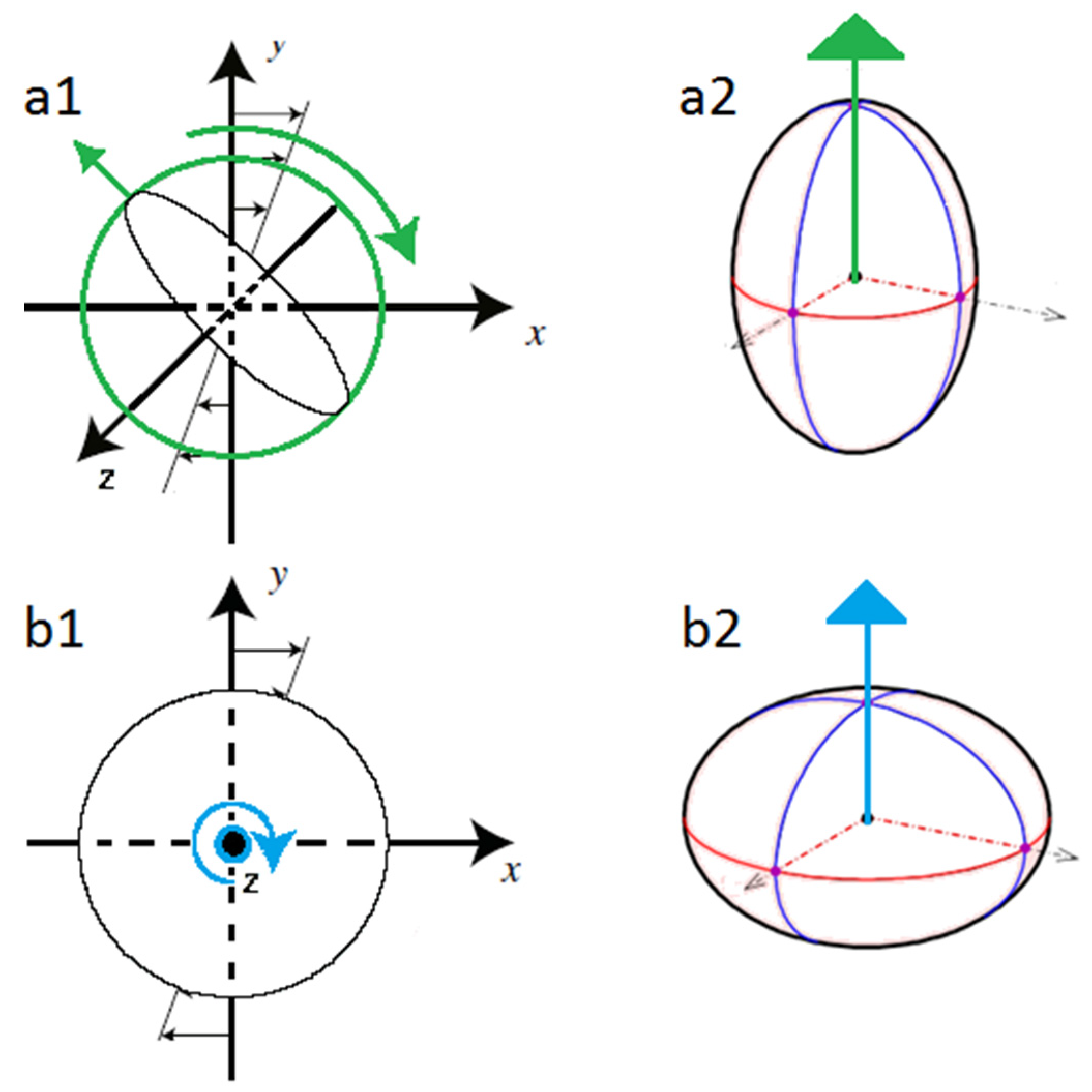
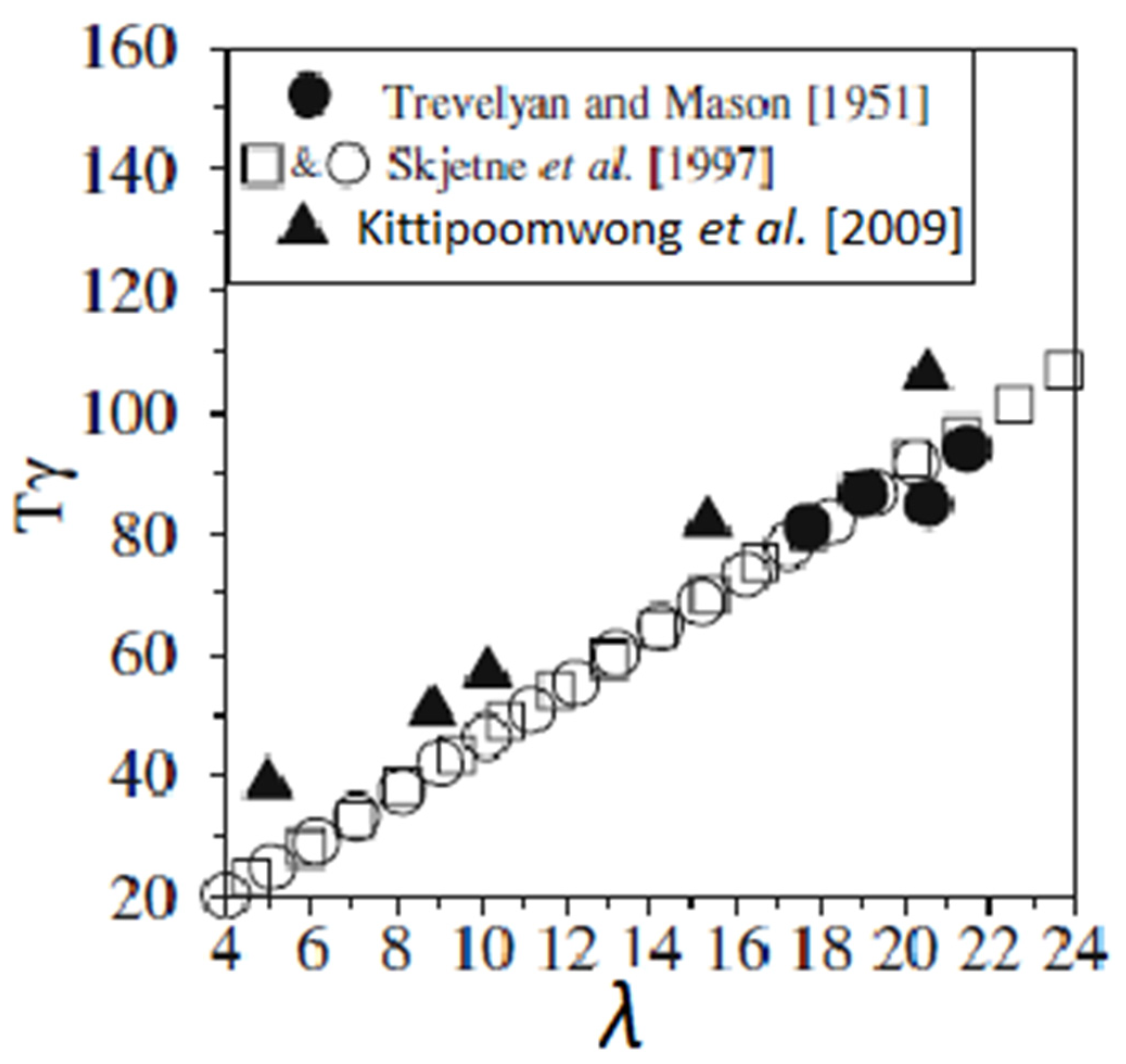

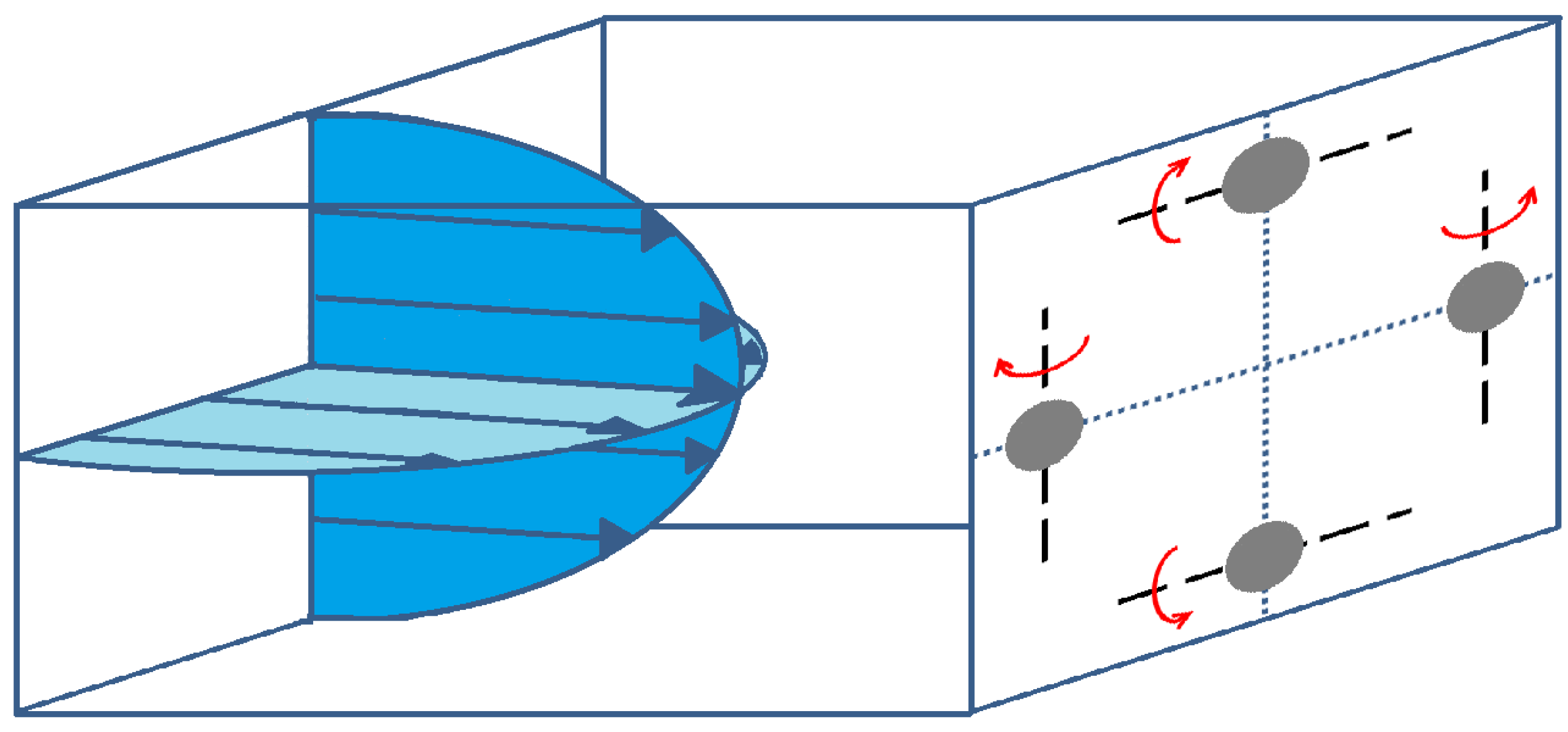
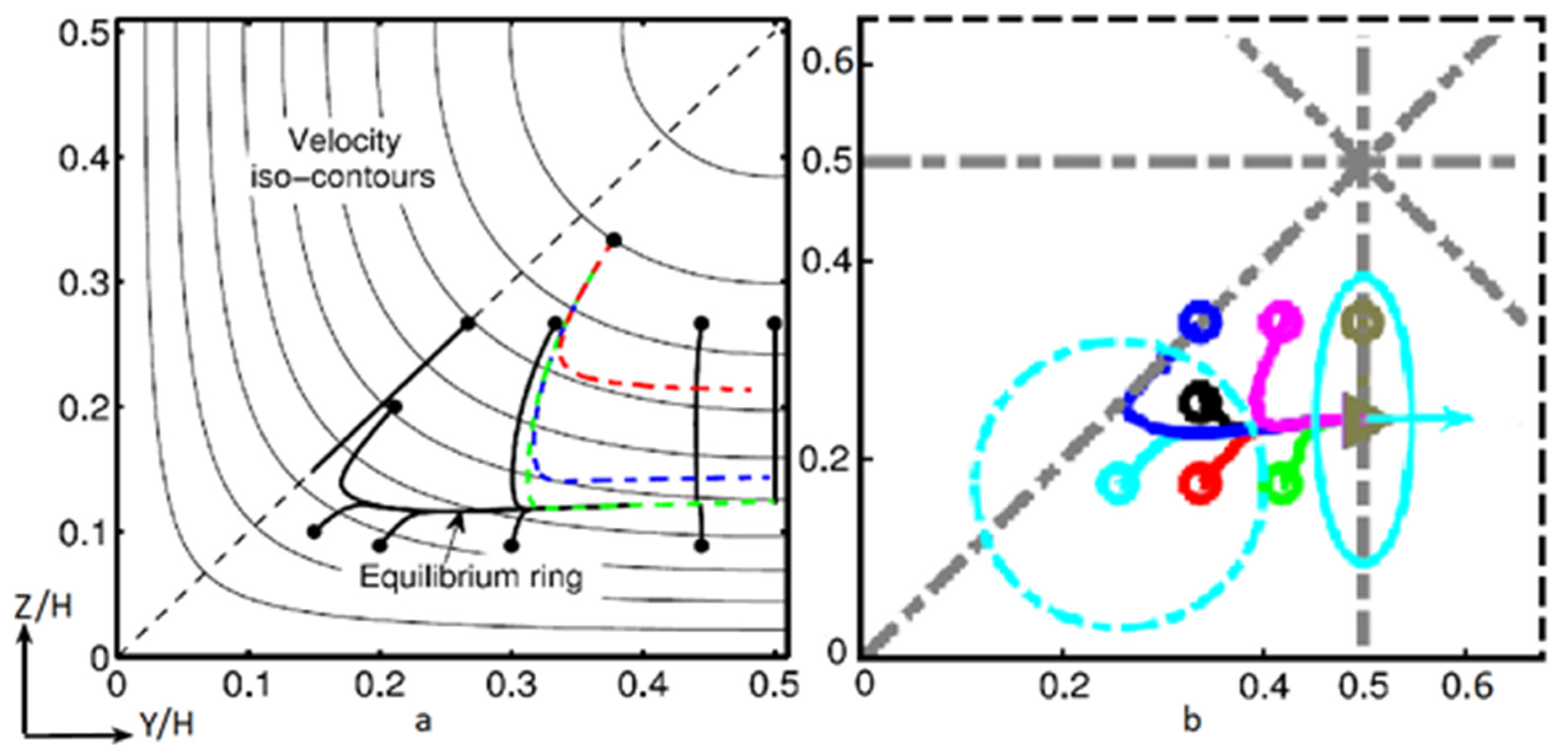


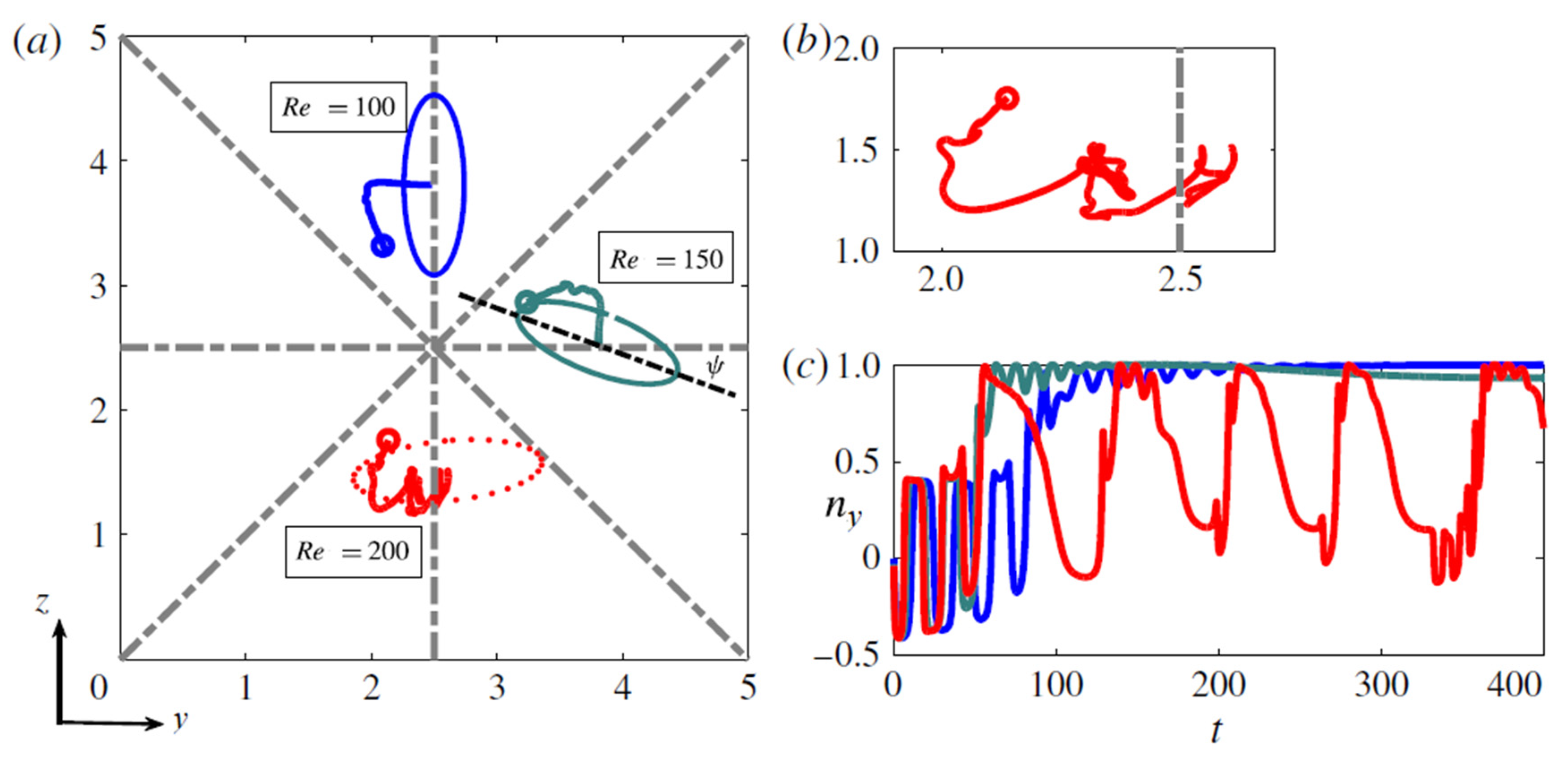
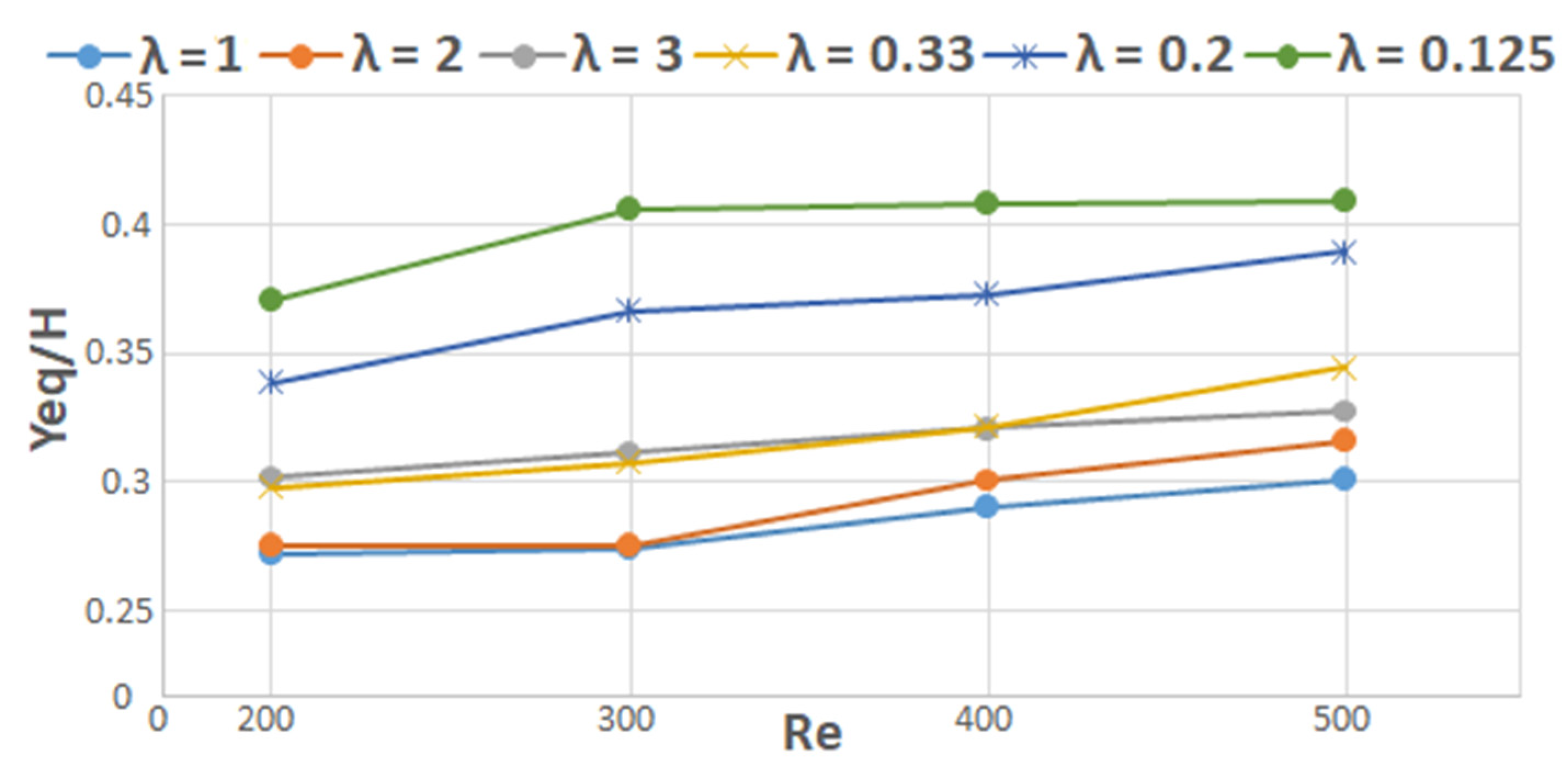
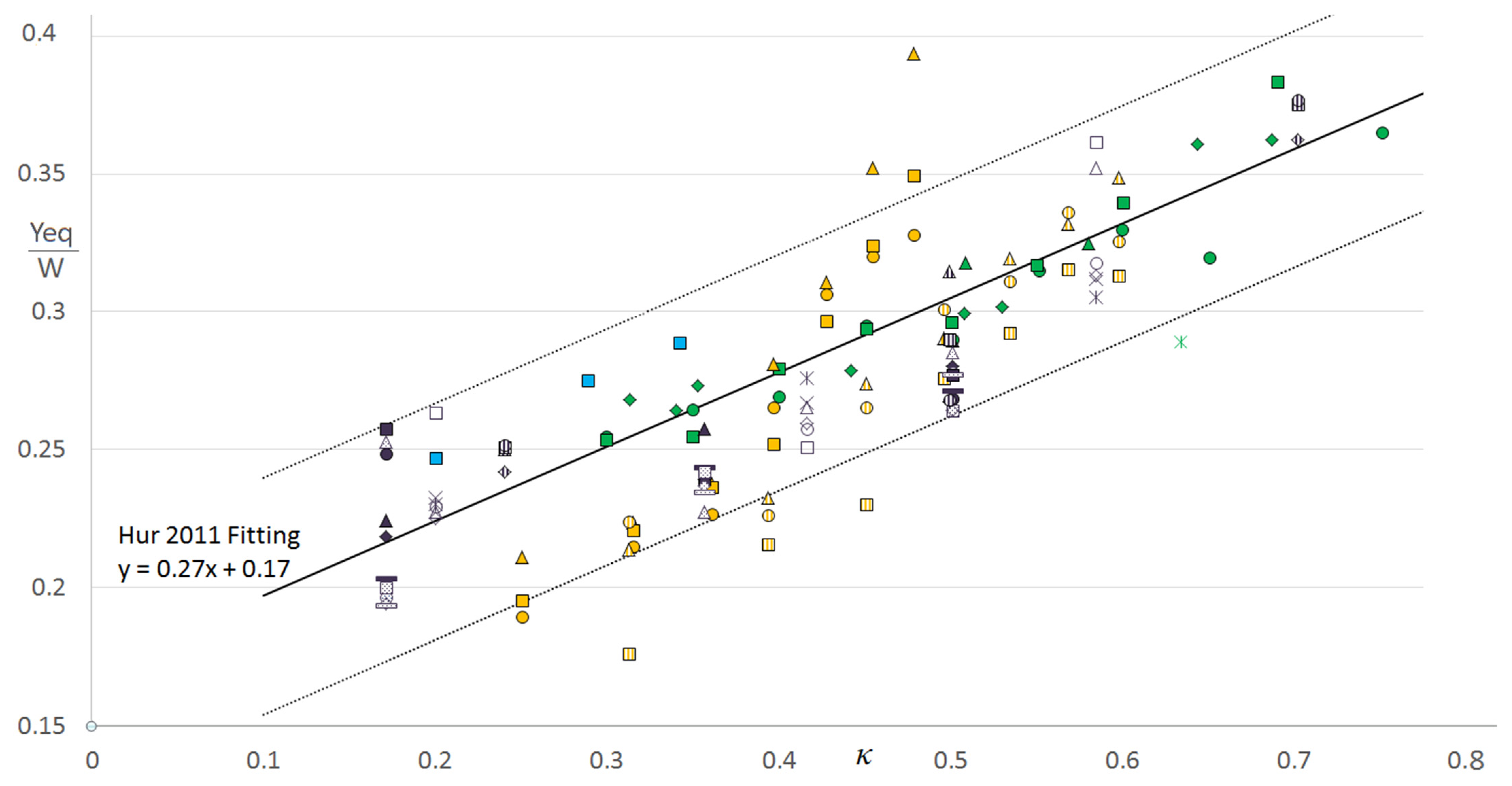
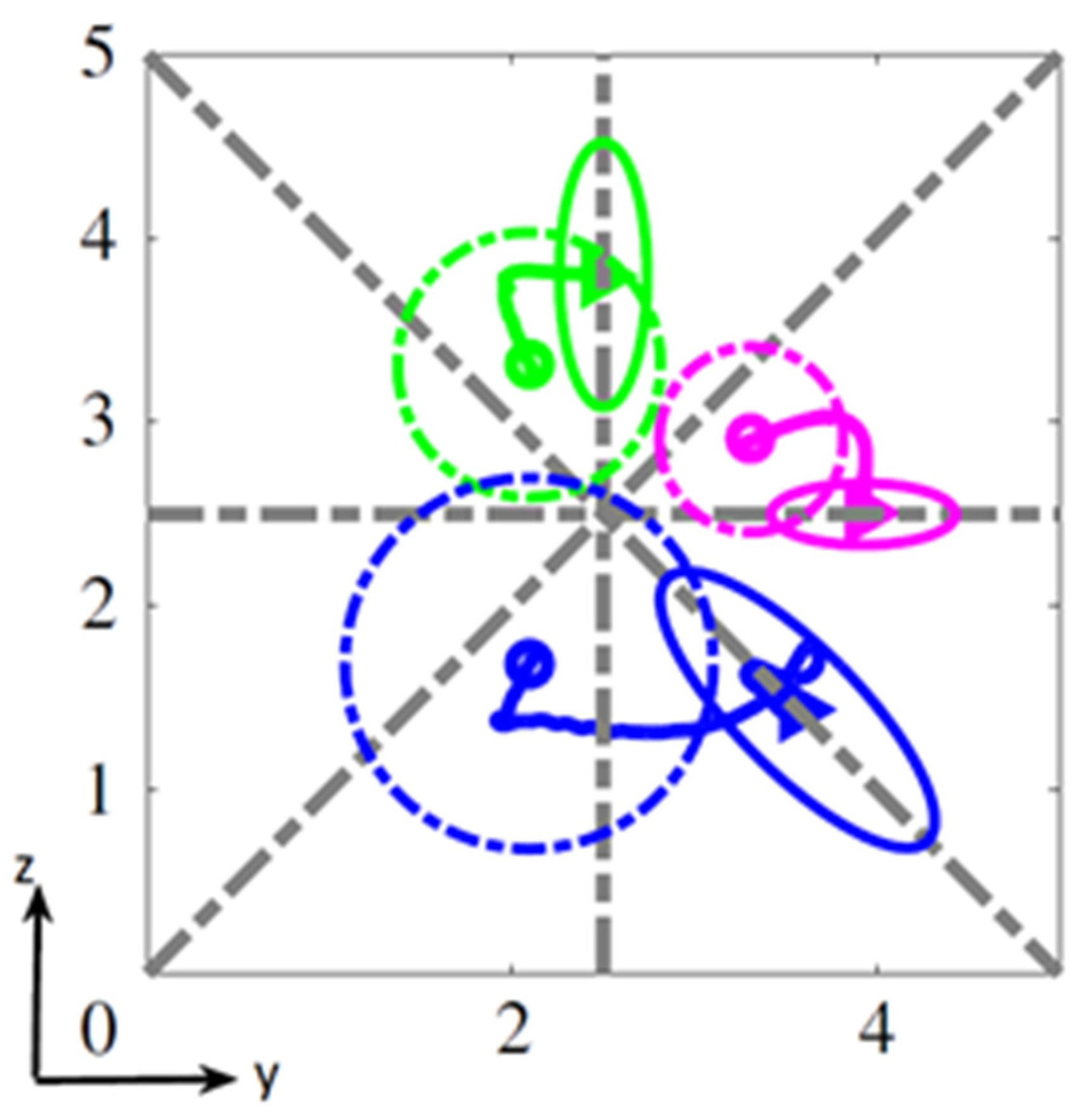
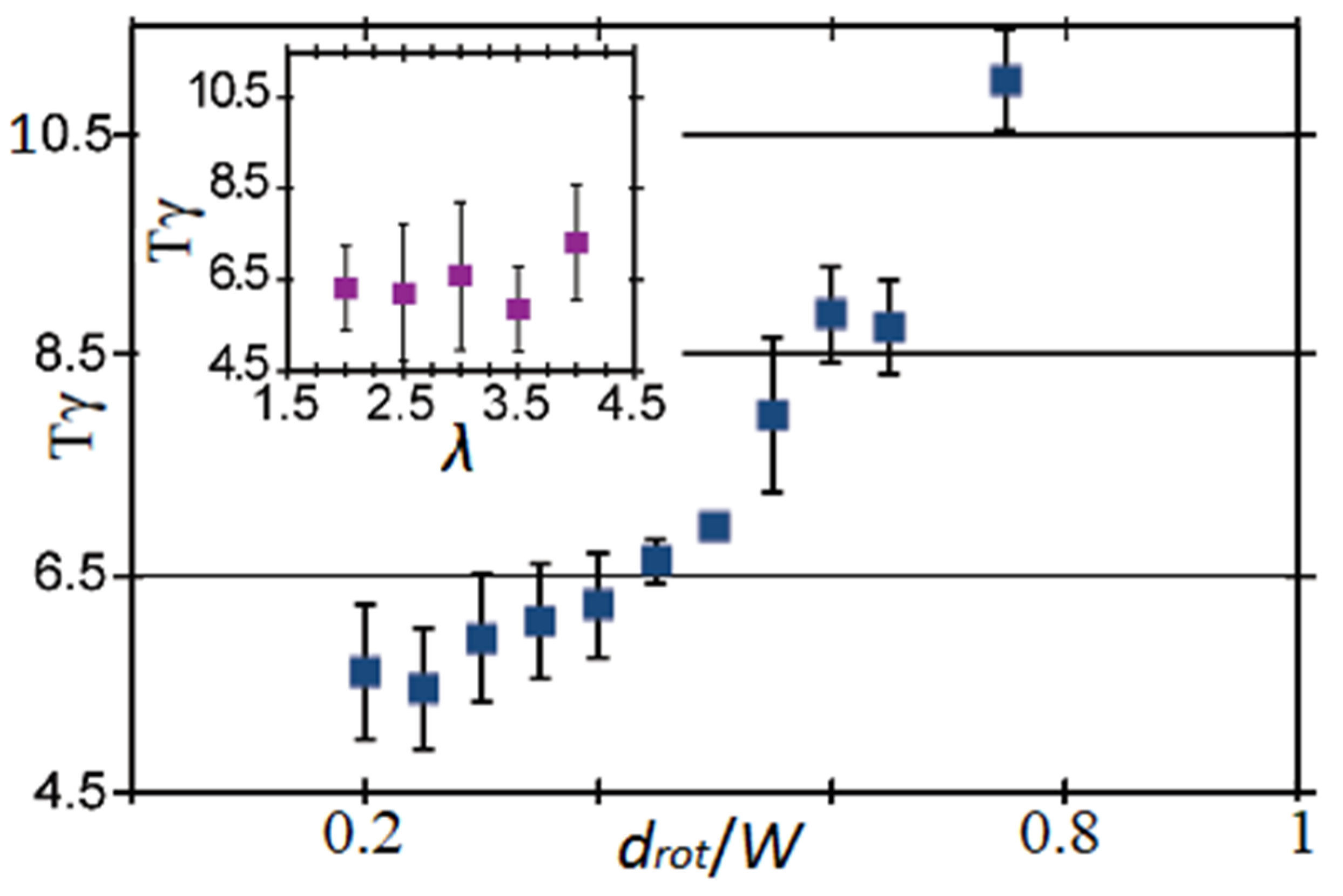
| Studied Phenomenon | Rotational Behavior | Inertial Migration | ||
|---|---|---|---|---|
| Type of flow Type of study | Unbounded shear | Bounded shear | Poiseuille | |
| Theoretical | [15,19,20,21,22,23,24,25,26] | [27,28,29,30,31] | [22,29] | - |
| Numerical | [15,23,25,26,32,33,34,35] | [36,37,38,39,40,41,42,43,44] | [16,17,45,46,47,48] | [16,17,45,47,49] |
| Experimental | - | [27,28,29,30,31,50,51,52,53,54] | [29,48,51,55,56] | [49,55,57,58] |
| Particle | Ellipsoid | Axisymmetric | |
| Prolate (λ > 1) | Oblate (λ < 1) | Rod/cylinder (λ > 1) | |
| Re (increasing) | Ka→Tu→DNC | Ka→LR→DNC | Ka→Tu→SS |
| Walls/κ | No effect, if the particle is far from the wall | Low κ: no effect High κ: effect on the transition Re | |
| Buoyancy | Effect on the transition Re | X | |
| λ (getting far from 1) | Period of rotation increases | ||
| Initial orientation | Effect present for Re = 0 DNC for Re > 0 | X | |
| Concentration (increasing) | X | The transition (Ka→Tu) occurs faster | |
Publisher’s Note: MDPI stays neutral with regard to jurisdictional claims in published maps and institutional affiliations. |
© 2021 by the authors. Licensee MDPI, Basel, Switzerland. This article is an open access article distributed under the terms and conditions of the Creative Commons Attribution (CC BY) license (http://creativecommons.org/licenses/by/4.0/).
Share and Cite
Tohme, T.; Magaud, P.; Baldas, L. Transport of Non-Spherical Particles in Square Microchannel Flows: A Review. Micromachines 2021, 12, 277. https://doi.org/10.3390/mi12030277
Tohme T, Magaud P, Baldas L. Transport of Non-Spherical Particles in Square Microchannel Flows: A Review. Micromachines. 2021; 12(3):277. https://doi.org/10.3390/mi12030277
Chicago/Turabian StyleTohme, Tohme, Pascale Magaud, and Lucien Baldas. 2021. "Transport of Non-Spherical Particles in Square Microchannel Flows: A Review" Micromachines 12, no. 3: 277. https://doi.org/10.3390/mi12030277
APA StyleTohme, T., Magaud, P., & Baldas, L. (2021). Transport of Non-Spherical Particles in Square Microchannel Flows: A Review. Micromachines, 12(3), 277. https://doi.org/10.3390/mi12030277







